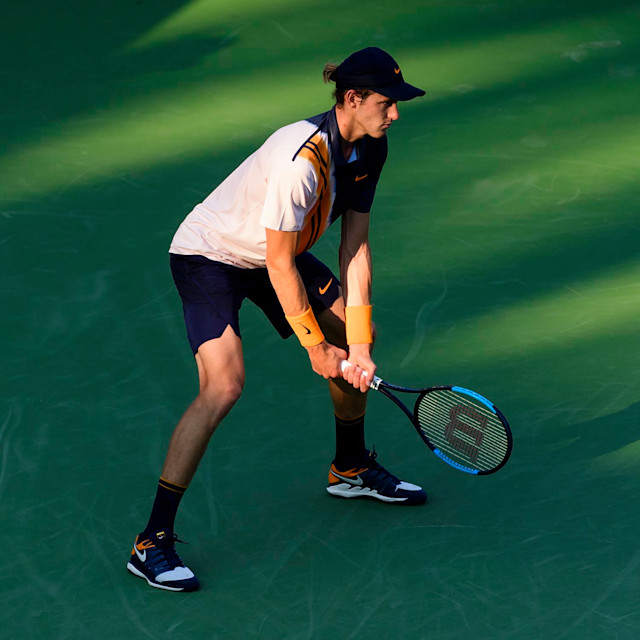Try his jump rope and squat progressions.
Though he grew up playing on clay, Nicolás Jarry isn’t afraid of green courts. In fact, he fully embraced the challenge by committing to the entire grass season this year. “I’m doing it mostly to build myself up as a tennis player,” says the 23-year-old from Santiago, Chile. “I think I can do a lot of damage on the surface.” The season runs through June and into July, wrapping with Wimbledon.
Jarry made his debut at the tournament in 2017, but he first watched the on-court action as a 10-year-old with his grandfather. That memory has fueled his tennis ambitions ever since.
Furthermore caught up with the 6-foot-6 player, who’s ranked 55th worldwide, to talk jump rope progressions, gluten-free diets, and more.
The training regimen:
“To play on grass, you need strong glutes, legs, and ankles because you have to stay low to move around quickly.
I’m in the gym for up to three hours each day and do pretty much every leg move you can imagine. Barbell lunges and squats are favorites of mine. Sometimes I’ll make the squats more challenging by standing on a long, looped band and securing the ends on the left and right sides of the barbell for extra resistance. I also do hip thrusts with my feet on the floor and my back on a bench to work the glutes, hamstrings, and lower back.
For stability, I jump rope. I’ll move forward and back, side to side, or jump on a BOSU ball instead of the ground.
Playing on grass is also difficult because the ball gets heavy if it’s wet outside. When that happens you need to rotate more to generate enough force, which demands upper-body mobility. To build it, I’ll do resistance band Ys, standing on the band with one handle in each hand in front of my hips, then pulling up and out to either side so my body makes a Y shape. At that point, I’ll move my hands from side to side to strengthen the scapula muscles.
I spend another two hours a day on the court, one in the morning and one in the afternoon. That’s where I get my cardio.”
The nutrition regimen:
“I’m gluten-free but I eat a lot of food. Breakfast is scrambled eggs, ham or bacon, two slices of gluten-free toast, and granola with fruit. For both lunch and dinner, I’ll have half a plate of rice or potatoes with salmon, chicken, or beef, and a side salad. If I’m still hungry, I’ll eat another piece of fruit.
My pre-match meal consists of rice with some kind of protein and olive oil. I drink a recovery shake afterward and take energy gels during my workouts. I use the Sponser products and protein powders.”
The recovery regimen:
“I don’t like cryotherapy or ice baths, but I stretch a lot, holding each position for at least 45 seconds. I get a massage every day to release all the tension that builds in my muscles.”
What’s next:
“After Wimbledon, I’ll play two clay tournaments in Europe: the Swedish Open in Bastad and the Hamburg European Open in Germany. Then I’ll head to the Pan American Games in Lima, Peru.”
Photo: ©Mike Frey TPN
